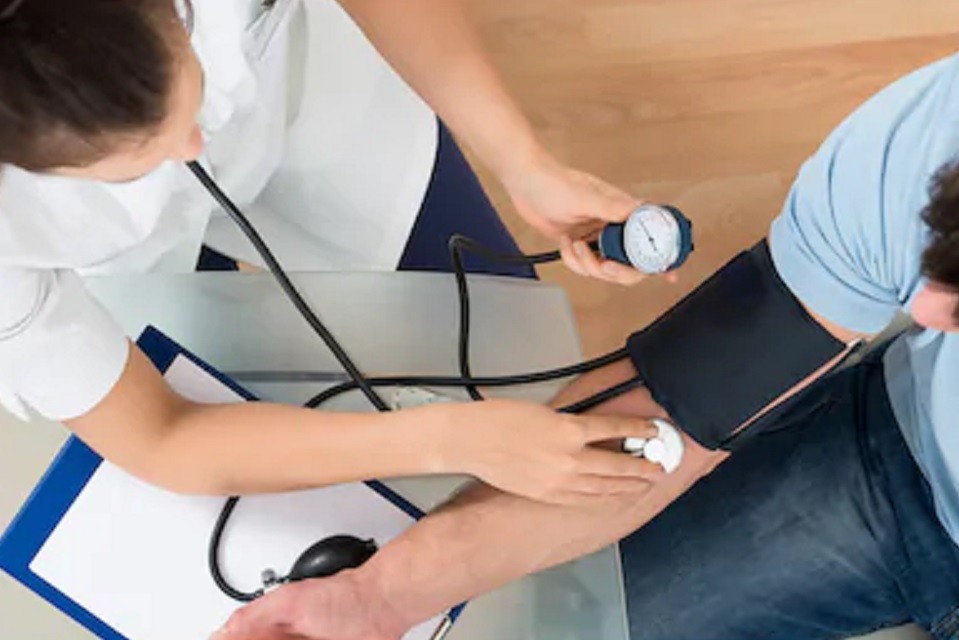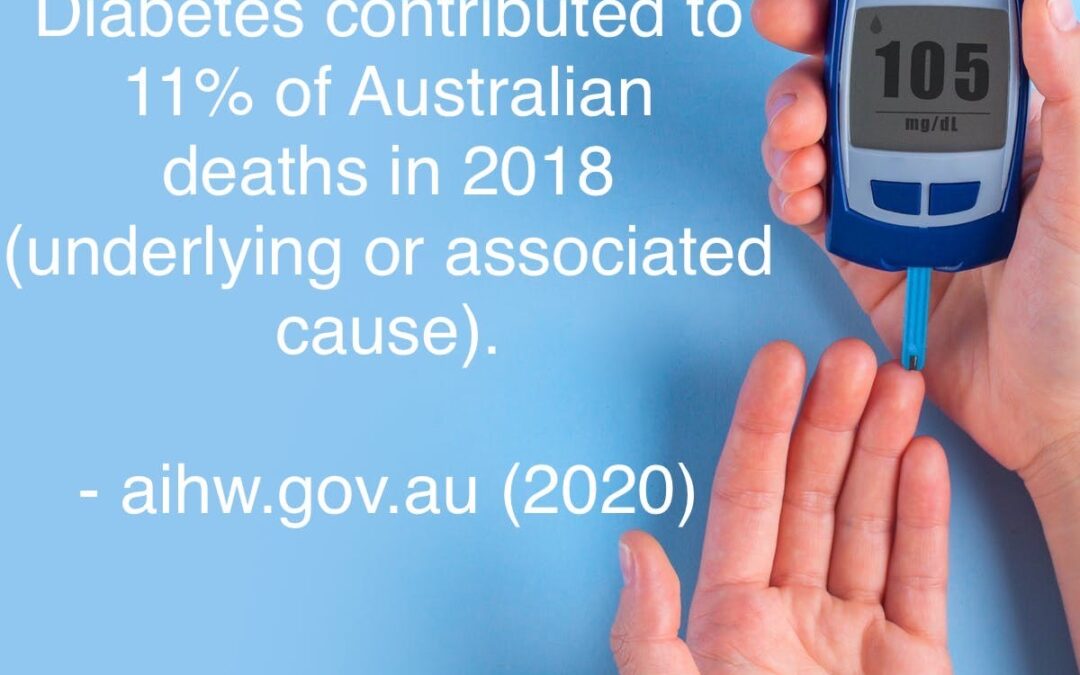
by Grace | Jul 21, 2020 | Health Assessments, Workplace Education
This week is brain awareness week. This is a global campaign to foster public enthusiasm and support for brain science (Brain Awareness, 2019).
According to Brain Australia (2017), our brain is one of the largest and more complicated organs in the human body intertwined by a hundred billion nerves.
According to Healthline (2017), here’s some fun facts about your brain:
- About 75% of the brain is made up of water. This means that dehydration can have a negative effect on the brain functions;
- An adult brain weighs about 1.5kg;
- Headaches are caused by a chemical reaction in your brain, combined with the muscles and nerves of your neck and head;
- Dreams are believed to be a combination of imagination, phycological factors an neurological factors – this proves that your brain is working even when you are sleeping;
- The brain can’t feel pain, rather it interprets pain signals sent to it;
- A brain freeze happens when you eat or drink something cold which chills the blood vessels and arteries in the very back of your throat, including the ones that take blood to your brain. These constrict when they’re cold and open back up when they’re warm again, causing pain in your forehead;
- The human brain begins to lose some memory abilities as well as cognitive skills by your late 20s;
- Your brain uses 20% of the oxygen and blood in your body;
The Brain Foundation suggests the following pointers to maintain a healthy brain:

by Grace | Jul 21, 2020 | Health Assessments, Workplace Education
‘Smart Eating Week’ celebrates healthy eating and the benefits a nutritious diet brings to your body and well-being.
What are the benefits of eating a well-balanced diet both at work and at home?
- Reduced stress levels;
- Increased energy levels;
- An improved immune system, decreasing absentee days at work;
- Improved mood;
- Enhanced memory;
- Enhanced productivity;
- Improved gut health;
- Reduced cancer risk;
- Diabetes management;
- Heart health and stroke prevention;
- Strong bones and teeth;
- A better night’s sleep;
- Weight loss;
Not sure how healthy your diet is? Take this healthy eating quiz – https://daa.asn.au/smart-eating-for-you/smart-eating-fast-facts/healthy-eating/
As working adults, sometimes we find it hard juggling work, study, family time and relaxing. Find out what works for you, should it be packing your lunch the night before to ensure you cover your nutritious needs or writing a shopping list before you hit the supermarket!
What makes up a healthy lunch?
- Breads and cereals (preferably wholegrain);
- Fruits, vegetables, and legumes (lots of different colours and flavours);
- Low fat dairy, including milk, cheese and yoghurt;
Get some healthy lunchbox ideas from Better Health Vic – https://www.betterhealth.vic.gov.au/health/HealthyLiving/Lunch-at-work

by Grace | Jul 21, 2020 | Drug & Alcohol Testing, Equipment Hire, Flu & Travel Vaccinations, Health Assessments, Skin Checks, Workplace Education
‘Most of our waking hours are spent at work, which means the working environment can play a big part in our health and well-being’ – Health Direct (2018).
Workplace Health and Safety Victoria’s aim is to provide employers with services which encourage holistically a happy and healthy workplace setting, which in turns saves your business’ back pocket!
What services can we provide your business?
- Workplace Health Assessments;
- Drug & Alcohol Testing;
- Flu & Travel Vaccinations;
- Workplace Health Education;
- Equipment Hire;
- Education;
‘Poor employee health is costing Australian businesses $7 billion annually’ – SmartCompany (2019).
We believe that early intervention is the key to your happy workplace and loss of employer income due to ill-health.
What are the benefits of implementing workplace health within your business?
- Reduced absenteeism;
- Increased productivity;
- Reduced staff turnover;
- Improved staff morale;
- Reduced insurance costs;
- Reduced risk of fines and litigation;
- A positive and caring image;
‘Most of our waking hours are spent at work, which means the working environment can play a big part in our health and well-being’ – Health Direct (2018).
Workplace Health and Safety Victoria’s aim is to provide employers with services which encourage holistically a happy and healthy workplace setting, which in turns saves your business’ back pocket!
What services can we provide your business?
- Workplace Health Assessments:
- Drug & Alcohol Testing;
- Flu & Travel Vaccinations;
- Workplace Education;
- Equipment Hire;
- Education;
Workplace Health Assessments:
Workplace Health and Safety Victoria offer workplaces an array of services to maximise the health of your employees, minimising unnecessary costs to your business. Our clinical nurse consultant visits your workplace for your convenience.
Pre-employment medical assessments are a workforce risk management tool used to assess an individual’s risk factors that may limit their ability to perform a job safely and effectively. Due to the extent of the tests required, we offer your employee to visit our clinic for a thorough assessment with our GP. Our pre-employment medicals are customised to suit the requirements of the job.
Our assessments can include:
- Urine, Drug and Alcohol screening
- Full Spirometry (Lung function)
Optional Assessments:
- DorsaVi (Specific muscular skeletal testing)
- Functional Capacity Assessments
*A range of other tests can be included on request when required.
Drug & Alcohol Testing;
“Alcohol and drugs cost Australian workplaces an estimated $6 billion per year in lost productivity.” – Alcohol and Drug Foundation (2017)
The use of drugs and alcohol can impact on workplaces in several ways, affecting relationships, safety and productivity:
- Alcohol and drugs cost Australian workplaces an estimated $6 billion per year in lost productivity;
- Recent research has estimated that 2.5 million days are lost annually due to drinking and drug use, at a cost of more than $680 million;
- 1 in 10 workers say they have been affected by a co-worker’s use of alcohol. For example, a reduced ability to do their own job, involvement in an accident or close-call, and having to work extra hours to cover for a co-worker; (Alcohol and Drug Foundation – 2017)
Impact of Drug and Alcohol Abuse:
According to NCADI statistics, alcohol and drug users:
- Are far less productive;
- Use three times as many sick days;
- Are more likely to injure themselves or someone else;
- Are five times more likely to file a worker’s compensation claim
In addition, to deaths and accidents, absenteeism and loss of production, other problems that alcohol and drug abuse can cause on the job include:
- Tardiness/sleeping on the job;
- Hangover or withdrawal affecting job performance;
- Poor decision making;
- Loss of efficiency;
- Theft;
- Lower morale of co-workers;
- Increased likelihood of having trouble with co-workers/supervisors or tasks;
- Preoccupation with obtaining and using substances while at work, interfering with attention and concentration;
- Illegal activities at work including selling illicit drugs to other employees;
- Higher turnover;
- Disciplinary procedures;
(Very Well Mind, 2020)
How can Workplace Health and Safety Victoria help your workplace?
- On-site testing;
- In clinic testing;
- Pre-employment testing;
- Training and education – A workplace drug testing program partly represents an employer’s effort to keep the environment at work safe for everyone;
Our accredited drug & alcohol testers can visit your workplace and conduct drug and alcohol testing or your staff can come to either of our conveniently located practices, Myers Street Family Medical Practice or The Cottage Medical Centre. We use saliva and/or urine drug testing tools along with our state-of-the-art breathalysers.
All results that are non-negative are sent to the laboratory and verified by a second more specific test before it is considered a positive. Chain of Custody protocols are always strictly adhered to and all information kept discreetly ensuring the privacy of employees and employers alike.
Education is an important part of drug and alcohol testing and we encourage all of our companies to be pro-active in this area so that everyone involved understands that this is a positive initiative that will benefit employees and employers.
Flu & Travel Vaccinations:
“On average, the flu causes an estimated 3,500 deaths in Australia each year”
– health.qld.gov.au (2018)
What is influenza?
Influenza is a respiratory illness commonly known as ‘the flu’. While most people recover form the flu in about a week, sometimes the flu can lead to other serious health problems such as bronchitis or pneumonia and in some cases, can be deadly – health.qld.gov.au (2018).
What are an employee’s chances of getting the flu?
Each year, about 5-10% of people in Australian communities get the flu. Some years, it can be as high as 20%. This means, the chances of employees getting the flu is 1 in 5 – (NIB – 2019).
Signs and Symptoms of the flu:
- Fever and chills;
- Cough, sore throat, and runny or stuffy nose;
- Muscle aches, joint pains, headaches and fatigue;
- Nausea, vomiting and diarrhoea;
It is important to seek immediate medical advice if the illness quickly becomes worse or if any of the following symptoms occur:
- Shortness of breath or rapid breathing;
- Chest pain;
- Confusion or sudden dizziness;
- Persistent vomiting;
Symptoms generally appear between two or four days after exposure.
(health.nsw.gov.au – 2019).
If an employee is sick with flu-like symptoms, they should stay at home until these symptoms have subsided.
What can employers do to avoid the flu?
- Encourage employees to get vaccinated;
- Take steps to minimise spread of infection by educating their staff of signs and symptoms;
- The provision of cough and hand hygiene materials in the workplace such as antibacterial gel, tissues, etc;
(health.nsw.gov.au – 2019)
What can employees do to avoid the flu?
- Eat a healthy, balanced diet containing plenty of fresh vegetables and fruit;
- Get the flu shot;
- Aim for at least 7 hours per night;
- Keep your distance if another employee comes to work with the flu;
- Consult your manager if another employee comes to work with the flu;
- Keep your workstation sanitised and practice good hygiene, especially after touching doorknobs, kitchen appliances, handrails and water fountains;
(EmploySure – 2019)
How does the flu shot work?
Australian flu vaccines expose the immune system to tiny amounts of the inactivated flu virus. The body then produces its own antibodies (which fight infections) and therefore, when the body is exposed to surface proteins of the flu, the person’s immune system will recognise these proteins and fight them.
Workplace Health and Safety Victoria are also able to provide your employees with travel vaccines.
Workplace Health Education:
We believe that they key to a happy and healthy workplace is prevention.
We provide workplaces health education sessions for the following but not excluded to:
- Ergonomics;
- Healthy diet and exercise;
- The effects of drugs and alcohol on the body and it’s performance;
- Health awareness including heart health, ovarian cancer, bowel cancer awareness or recommendations by you;
- Preventing and managing health conditions;
- Mental Health Awareness and managing;
- Managing workplace stress;
- Skin health awareness;
- Diabetes awareness and management;
Please get in touch if you have a specific topic you would like us to educate your employees on.
Equipment Hire:
Through our sister-company ’30 Minute Fitness’, we hire out the following fitness equipment to encourage your employees to exercise for 30 minutes per day:
- Treadmills;
- Exercise Bicycles;
- Elliptical cross trainers;

by Grace | Jul 21, 2020 | Health Assessments, Workplace Education
Last week was National Diabetes Week.
According to Diabetes Australia (2020), diabetes is when the body does not or insufficiently converts glucose (sugar) from food into energy, resulting in high blood glucose levels.
Glucose is the main source of energy for our bodies. In people with diabetes, the hormone insulin, which assists in the conversion process, is not produced or is produced to insufficient amounts by the body. Therefore, when people with diabetes eat glucose (such as breads, cereals, fruits and starchy vegetables), it cannot or is inadequately converted to energy.
𝗪𝗵𝗮𝘁 𝗰𝗮𝗻 𝘂𝗻𝘁𝗿𝗲𝗮𝘁𝗲𝗱 𝗱𝗶𝗮𝗯𝗲𝘁𝗲𝘀 𝗹𝗲𝗮𝗱 𝘁𝗼?
• Heart attack;
• Stroke;
• Kidney disease;
• Limb amputation;
• Depression;
• Anxiety;
• Blindness;
(Diabetes Australia, 2020)
𝗣𝗿𝗲𝘃𝗲𝗻𝘁𝗶𝗼𝗻:
According to Diabetes Australia, there are different types of diabetes; the three most common types of diabetes are type 1, type 2 and gestational diabetes.
𝑇𝑦𝑝𝑒 1:
Currently type 1 diabetes cannot be prevented.
𝑇𝑦𝑝𝑒 2:
Evidence shows type 2 diabetes can be prevented in up to 𝟱𝟴 𝗽𝗲𝗿 𝗰𝗲𝗻𝘁 of cases by:
• Maintaining a healthy weight;
• Regular physical activity;
• Making healthy food choices;
• Managing blood pressure;
• Managing cholesterol levels;
• Not smoking;
𝗦𝘆𝗺𝗽𝘁𝗼𝗺𝘀:
• Being more thirsty than usual;
• Passing more urine;
• Feeling tired and lethargic;
• Always feeling hungry;
• Having cuts that heal slowly;
• Itching, skin infections;
• Blurred vision;
• Unexplained weight loss (type 1);
• Gradually putting on weight (type 2);
• Mood swings;
• Headaches;
• Feeling dizzy;
• Leg cramps;
For diabetes education sessions within your workplace or community networks, please contact [email protected] or call 0456 387 569.



